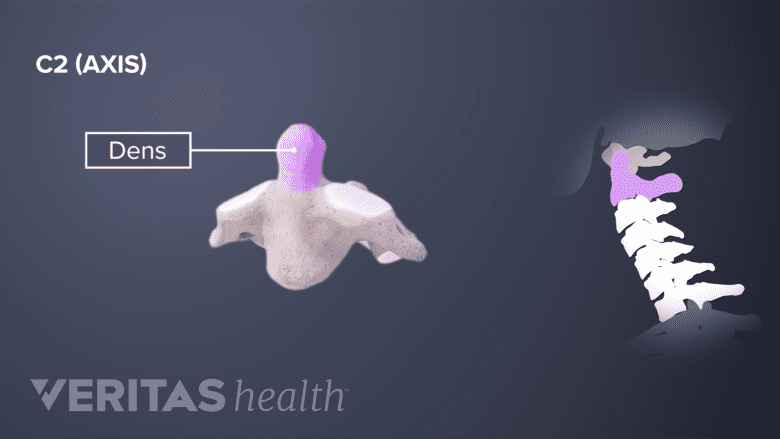The dens, also known as the odontoid process, is a peg-like bone pointing up from the second cervical vertebra (C2) and connects to the first cervical vertebra (C1) and enables head rotation. Crowned dens syndrome occurs when too many calcium deposits form on the bone’s surrounding ligaments, which can look like a “crown” and cause excruciating neck pain.

The reason some people develop crowned dens syndrome and others do not is still not fully understood by the medical community. However, age and gender appear to be risk factors as crowned dens syndrome is more likely to occur in women over age 60.
In This Article:
- Little-Known Causes of Neck Pain
- Neck Pain from Fibromyalgia
- Neck Pain from Thoracic Outlet Syndrome
- Neck Pain from Lyme Disease
- Neck Pain from Crowned Dens Syndrome
- Neck Pain from Eagle Syndrome
Common Symptoms
Crowned dens syndrome symptoms could include one or more of the following:
- Neck pain. This symptom is the most common, and it is likely to feel intensely sharp—especially with movement. This pain is typically located in the top of the neck and base of the skull.
- Neck stiffness. Due to pain and inflammation, moving the neck can become difficult.
- Fever. Patient may have a high temperature and other signs of inflammation.
- Neurological problems. If the spinal cord becomes compressed by crystal formations toward the top of the cervical spine, myelopathy can occur. Some symptoms could include pain, tingling, and/or numbness anywhere in the body beneath the upper neck, reduced strength and coordination of arms and/or legs, and/or reduced bowel and bladder control.
One study found that of the people who had crystal formation on the ligaments surrounding the dens, less than 20% had painful symptoms.1Salaffi F, Carotti M, Guglielmi G, Passarini G, Grassi W. The crowned dens syndrome as a cause of neck pain: clinical and computed tomography study in patients with calcium pyrophosphate dihydrate deposition disease. Clin Exp Rheumatol. 2008; 26(6); 1040-6. As such, some medical experts say pain must be present for it to truly be considered crowned dens syndrome.
Why Crowned Dens Syndrome Causes Neck Pain

It is not known why the formation of calcium deposits around the dens cause symptoms for some people but not others. However, it is thought that these calcifications may sometimes cause an inflammatory response.
The head’s rotation mostly involves movement around the dens. Any additional friction or obstacles within this C1-C2 joint—such as occurring from calcifications associated with crowned dens syndrome—can potentially increase inflammation and neck pain.
See C1-C2 Treatment
Diagnosis
Crowned dens syndrome is unlikely to be among the first causes suspected for neck pain due to its rarity. However, if the doctor eventually requests a CT scan of the cervical spine, crowned dens syndrome can be relatively easy to spot. CT scans use a computer to create cross-sections from multiple X-ray images, which can show even small abnormalities in bones.
If the patient is experiencing neck pain and other symptoms, and the CT scan shows the “crown” of calcifications that have formed on the dens, crowned dens syndrome is the official diagnosis.
Treatment
Crowned dens syndrome is typically treated non-surgically with prescription anti-inflammatory medications, such as nonsteroidal anti-inflammatory drugs (NSAIDs) and colchicine, or corticosteroids, such as prednisolone.
Most cases of symptomatic crowned dens syndrome resolve within a few weeks or months—possibly due to resorption of the calcium deposits. In cases where the symptoms persist longer, surgery may be considered, especially if inflammation and/or calcifications have started to cause spinal cord compression.
- 1 Salaffi F, Carotti M, Guglielmi G, Passarini G, Grassi W. The crowned dens syndrome as a cause of neck pain: clinical and computed tomography study in patients with calcium pyrophosphate dihydrate deposition disease. Clin Exp Rheumatol. 2008; 26(6); 1040-6.

